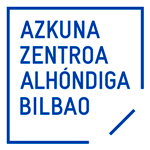
Lima, 1980. She began her career in Fine Arts at the Catholic Pontifical University of Peru, and finished at the Polytechnic University of Valencia, where she also graduated with a Master’s degree in Multimedia and Visual Arts.
In 2014 she was awarded the Premio ARCO Comunidad de Madrid for Young Artists and in 2013 the Premio Generaciones and the Endesa Scholarship for Plastic Arts. She has been an artist in residence in Gasworks - London, MATADERO - Madrid, Cité des Arts - París, Tokyo Wonder Site - Tokio, Beta Local - Puerto Rico, Bauhaus - Germany and Jan Van Eyck Academie - Holland. Her works form part of collections such as CA2M: Centro 2 de Mayo, IVAM, Montemadrid Foundation, Provincial Museum of Teruel, Endesa Foundation, DKV Arte y Salud e Inelcom in Spain; Bauhaus Dessau Foundation in Germany and MASM, Museum of Art at the Universidad Mayor de San Marcos in Peru.
Share:
Oro alla Patria
The Project that I present explores the use of rationalist architecture on behalf of the fascist Italian government in the construction of a favourable imaginary in their colonialist plans for Africa. It analyses the discussions that defined the architectural style applied to the colonies, and how that gave shape to the narrative that had an impact on the civil population and its attitude towards colonial expansion. The project connects the campaign of the collection of metal, organized by the fascist government in 1935, with its plans to convert the desert of Libya into an agricultural area. It seeks to understand, through the Italian case, the role that architecture can have in the construction of national discourse. This exploration is formalized through an installation and a video.
The beginning of the project came about upon finding an image published in a magazine, of a house with rationalist architecture in the middle of a desert. The picture intrigued me, and when searching out its origins, different layers of a complex story began to reveal themselves. Such dissimilar elements such as vernacular architecture from the north of Africa, the Berber culture, the legacy of the Roman Empire, the fascist cinematographic machinery, La Mostra Triennale delle Terre Italiane d’Oltremare of 1940, the participation of FIAT in the colonial expansion, or the promotion of the tourist industry in the colonies. I try to string some of these elements together in the different pieces that form part of the project: the formal ones in the case of the sculptures, the narrative ones in the case of the video.
Rome welcomed me on March 30th with a sunny afternoon. After having spent an entire year in the cold temperatures of Holland, returning to my mother tongue and the warmth of the Mediterranean made my adaptation very easy, in spite of being the last to arrive.
I arrived late and was well aware that three months of scholarship were not going to take me very far. I entered the Academy with the firm determination to work with a clear objective, based on references that I had brought with me, and to avoid diversions and distractions. But if you have curiosity, Rome gets into you and doesn’t let you leave.
How to trace a line between anecdote and what is important if everything seemed important? How to discern between noise and signs, if you are surrounded by signs left, over a period of 30 centuries?
Entruscan burials reroute my thoughts towards unforeseen places, while the opus reticulatum returns me to my original path. The grotesque frescos of the Domus Aurea sparked my imagination; the rationalist architecture of the EUR zone grounded me.
Over two thousand years ago Tibulo baptised Rome as Urbs Aeterna. I would need almost an eternity to discover and simulate all that Rome promises.
